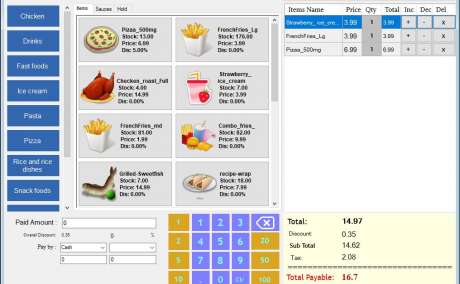
Description
Usage metering means tracking how much of a service a customer consumes (for example, number of API calls, active user seats, data stored, bandwidth used), then basing at least part of the billing on that consumption. Heavy users pay more; light users pay less. That simple concept has big implications for both businesses and customers.
For customers
They get what they pay for. Instead of over-paying under a one-size-fits-all plan, customers who don’t use much of the service benefit from lower costs. That lowers the barrier to entry.
Transparency improves trust. When invoices clearly show how usage maps to cost, surprises are fewer. Users see precisely how their behavior or usage affects their bill.
For businesses
Revenue aligns better with costs. Heavy users often impose higher infrastructure, support, and operational expenses. With usage billing, those costs are more fairly covered.
There’s potential to grow revenue from high usage without forcing those users into expensive flat plans that might feel overpriced for smaller ones.
It encourages efficient resource usage. If usage is metered, both provider and customer are motivated to optimize consumption. Waste is discouraged.
It’s not always the right choice for every SaaS product. Here are some signals that metered billing might be a good fit:
You have a mix of customers—small, medium, and enterprise—whose usage varies drastically.
Costs scale with usage (e.g. infrastructure, storage, API calls). When usage grows, your cost structure grows too. Flat pricing can under-charge heavy users.
On the other hand, usage billing may be less suitable if:
Your product usage is very predictable or flat for all users, so flat rates simplify everything.
The complexity of tracking and invoicing usage introduces overhead that outweighs the benefits.
You want simple forecasting and budgeting for both you and your customers—usage variability can complicate that.
Implementing usage metering comes with its own issues. Businesses must plan well to avoid common pitfalls:
Tracking and data accuracy: Usage data needs to be collected in real time and accurately. Relying on manual tracking or delayed reporting leads to mistakes and unhappy customers.
Handling micro-transactions: Small usage events, for example a few API calls or small data transfers, can seem negligible individually but add up. If the system rounds them off or overlooks them, revenue is lost.
Billing clarity and customer trust: If customers aren’t sure what triggers charges or how each usage metric is measured, trust erodes. Transparent dashboards or portals help a lot.
Revenue recognition & accounting complexity: Billing based on usage means variable amounts each cycle, deferred revenue, and sometimes refunds or adjustments. Accounting practices must handle that complexity.
User experience & flexibility: Upgrades, downgrades, or plan changes should be seamless. Invoices need to update accurately when usage patterns change.
If a SaaS business decides to move toward usage-based billing, here are practices that help ensure a successful transition:
Define useful metrics clearly
Pick usage metrics that closely align with cost and user value. For example, for a video streaming platform it might be hours viewed; for a data analytics tool it might be number of processed records or storage used.
Hybrid models can ease the shift
Many businesses combine fixed base charges with usage add-ons. This way, part of the revenue is guaranteed, users get some predictability, but you still capture incremental usage income.
Real-time dashboards & usage visibility for customers
Let customers track their usage as they go. When usage spikes are visible ahead of billing, customers can adjust consumption or upgrade their plan rather than being surprised by high bills.
Automate everything
Usage tracking, billing cycles, invoice generation, plan transitions—all of it should be automated. Manual processes fail quickly once you scale.
Set thresholds and caps
Minimum usage and maximum usage thresholds can protect both sides. For example, avoid bills that are extremely low (which may cost you to process) and protect against runaway usage by very large users unless pricing reflects that.
Transparent pricing structure
Be upfront about how usage is measured, billed, and adjusted. Ensure your terms of service clearly communicate what usage qualifies, what the charges are, and how customers can monitor or dispute usage.
The SaaS landscape is changing. Competition is intense, customers have more choices, and expectations of fairness are rising. Flat pricing models work—until someone offers more flexible, usage-aligned pricing. Businesses that embrace usage metering can better retain customers, scale with fairness, and improve profitability. Meanwhile, customers get more value and feel less locked in to plans they don’t fully use.
If your SaaS business still relies solely on fixed-pricing plans, it’s time to evaluate whether usage metering could unlock new revenue streams, reduce churn, and build trust. Whether you're ready to go full usage or test a hybrid approach, the right toolkit and backend (automation, billing software, dashboards) will make all the difference.
By designing usage-aware billing systems, you set up your business to grow in step with customer usage—creating flexibility, improving value perception, and ultimately building a more sustainable revenue model for both sides.

Reviews
To write a review, you must login first.
From the Same Seller

Seller Info
Location
40 Wellington Pl, Warley, Brentwood CM14 5XD, United Kingdom
(View Map)